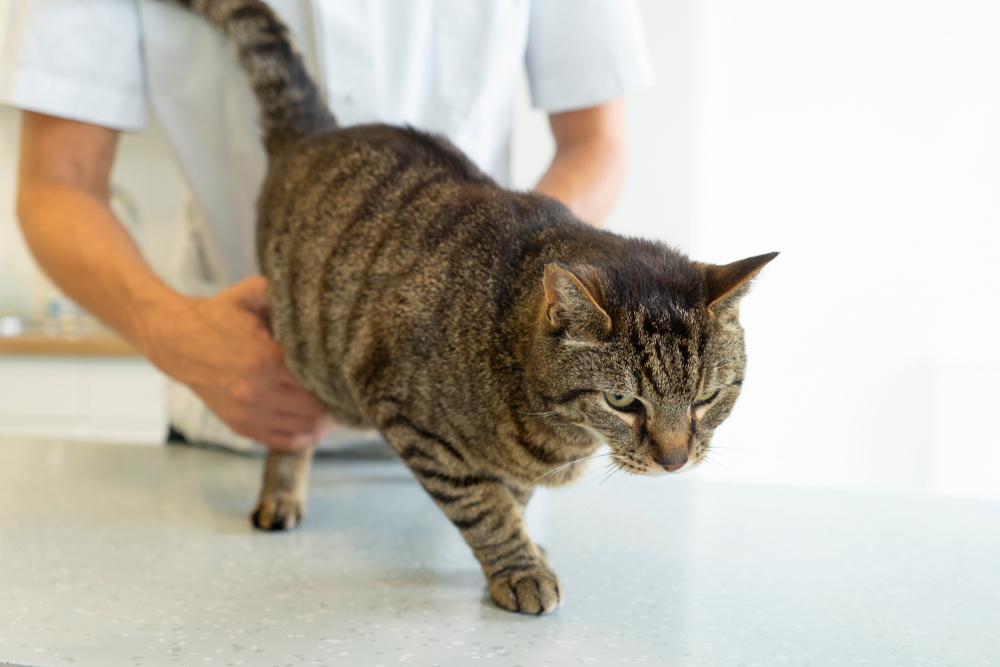
Let’s just get this right out of the way first: animals feel pain.
They have different pain tolerances, just like people do (if I step on my pit bull Gwen’s toe, she never notices, but if I accidentally do the same to my Pomeranian, Turley, she’ll scream, run and hide, and not speak to me for days) but sensing pain comes hand-in-hand with having a complex neurosystem and a big brain.
The challenge for us as veterinarians is how we detect and react to their pain.
To address the complexities of animal pain and its management, the International Veterinary Academy of Pain Management (IVAPM) has declared September to be Animal Pain Awareness Month. (https://ivapm.org/animal-pain-awareness-month/) It’s also Pain Awareness Month for another group of big-brained animals – people.
Treating animal pain will always involve some guesswork until someone develops a way for dogs and cats (and horses and iguanas, etc.) to point to their anatomy and say “It hurts right here, doc.” Until that beautiful day, we have to tease out the sometimes-subtle signals of discomfort and adopt a trial-and-error approach, backed up by science whenever possible.
As an ER clinician, acute pain is what I deal with most. I do see animals with chronic pain, and try to help whenever I can, but for those patients I encourage pet owners to seek the counsel of their family veterinarian, since chronic pain will take a solid partnership spanning weeks or months – things that are impossible in the rushed setting of the ER.
With that as preamble, I’ll share some tips from 25 years of ER pain management.
- If a condition is known to be painful, treat for pain. Blocked cats are painful. Pancreatitis is painful. Pyelonephritis hurts. Some diseases have pain baked in, and treating pain should always be part of the initial management plan, yet I very often see pets with diseases such as pancreatitis and urethral obstruction go without pain medication. Until the disease has calmed down, assume pain is present and treat for it.
- Recognize the signs of pain. Is that cat sitting at the back of the cage hissing because he is afraid, or is it pain? Is the usually sweet and slap-happy Golden now snapping at the kids because his ears hurt? Recognizing an animal in pain is an important first step in managing pain. A trial of pain medication (perhaps even combined with appropriate sedation) can help tease out the complex web of animal pain responses and decrease the fear, anxiety, and stress of painful conditions and hospitalization. Using a validated pain scale (available at https://ivapm.org/, and many other places) can also help to quantify and track pain during treatment.
AAHA, in 2015, developed guidelines for small-animal practitioners that clearly outline ways to monitor and manage pain: https://ivapm.org/wp-content/uploads/2017/03/2015_aaha_aafp_pain_management_guidelines_for_dogs_and_cats-03.10.17.pdf
- Use the right class of medication for the disease. Let’s look again at blocked cats and patients with pancreatitis. A blocked cat who is non-azotemic and going home might benefit from an NSAID used cautiously. A blocked cat with a K+ of 8 and a creatinine of 4? The medical board will be knocking at your door if you give an NSAID.
Same holds true for a dog with raging pancreatitis. If he’s vomiting every time the wind blows, an NSAID will only make matters (way) worse. Opioids have minimal GI effects beyond constipation (which I have not seen as a major problem), and we use tons of opioids in the ER and ICU to manage pain. Our brains (and those of our patients) are hard-wired to receive opioids – it’s a gift from evolution and nature. Use it.
Why do brains have receptors for chemicals produced by a poppy largely grown in the Middle East? I have no idea, but for the sake of my patients I am thrilled that they do, and I make use of it every day I am on the clinic floor.
The opioid crisis has certainly made giving opioids a challenge, with increased regulation and paperwork and changes in the supply chain making some drugs unavailable. Try to keep abreast of what’s on and off the market and do your best to make sure you always have a few options for good pain control on hand. I think every hospital needs to have a full mu agonist such as fentanyl, morphine, or hydromorphone on hand for treating severe pain. Butorphanol is great as an adjunct for sedation for minor procedures like lacerations, but it’s just not potent enough for cases of moderate to severe pain.
- Sometime more is more. Treating pain with multiple different approaches can result in better pain control and lower doses of any individual medication. Using a lidocaine sacrococcygeal block to help unblock a cat, combined with a full mu agonist like fentanyl, or an opioid agonist/antagonist like buprenorphine, can treat pain from different angles, as well as make unblocking easier.
Look for creative ways to address pain, using different techniques such as local blocks, epidurals, and topical lidocaine patches. Combining classes of drugs such as NSAIDs and opioids, in carefully selected patients, can achieve results that higher doses of either drug can’t achieve.
I have found that learning new techniques can be a great way to fend off burnout and makes me feel as if I am growing as a clinician. Learning new pain management skills aids me in fulfilling my obligation to alleviate animal suffering. Enrolling in CE classes, attending online seminars, and even brainstorming with colleagues can open new worlds to the clinician who wants to learn and grow. It can also make great financial sense to a practice, as owners now accept and even expect advanced pain-control modalities.
The IVAPM offers consultations in pain management and pathways to become IVAPM-certified as a pain management practitioner. (More info at https://ivapm.org/).
We all want our patients to live long, pain-free lives. Learning about pain and learning new ways to manage pain and recognize it will serve our patients better and help us grow as doctors and people.
This article was reviewed/edited by board-certified veterinary behaviorist Dr. Kenneth Martin and/or veterinary technician specialist in behavior Debbie Martin, LVT.
